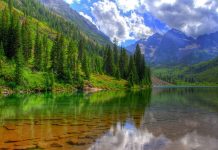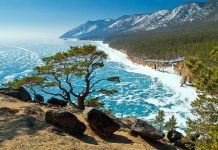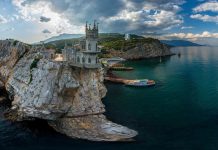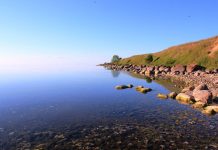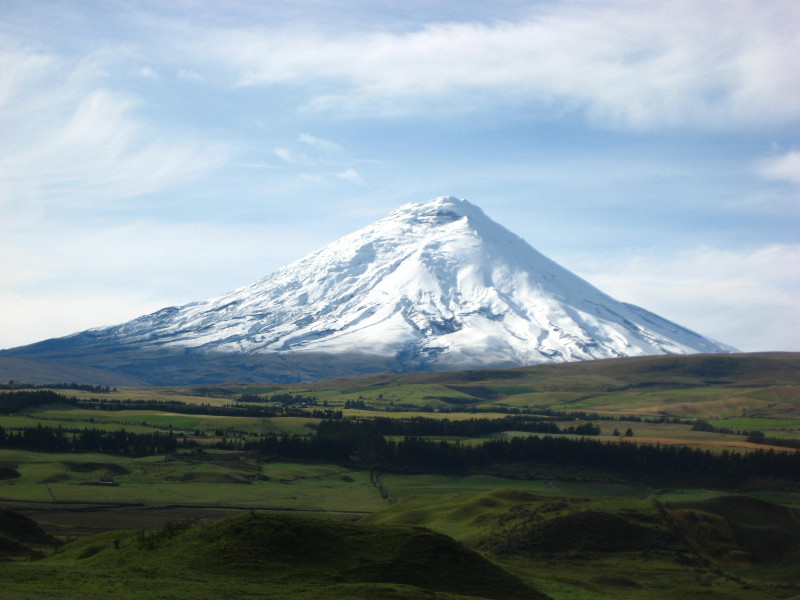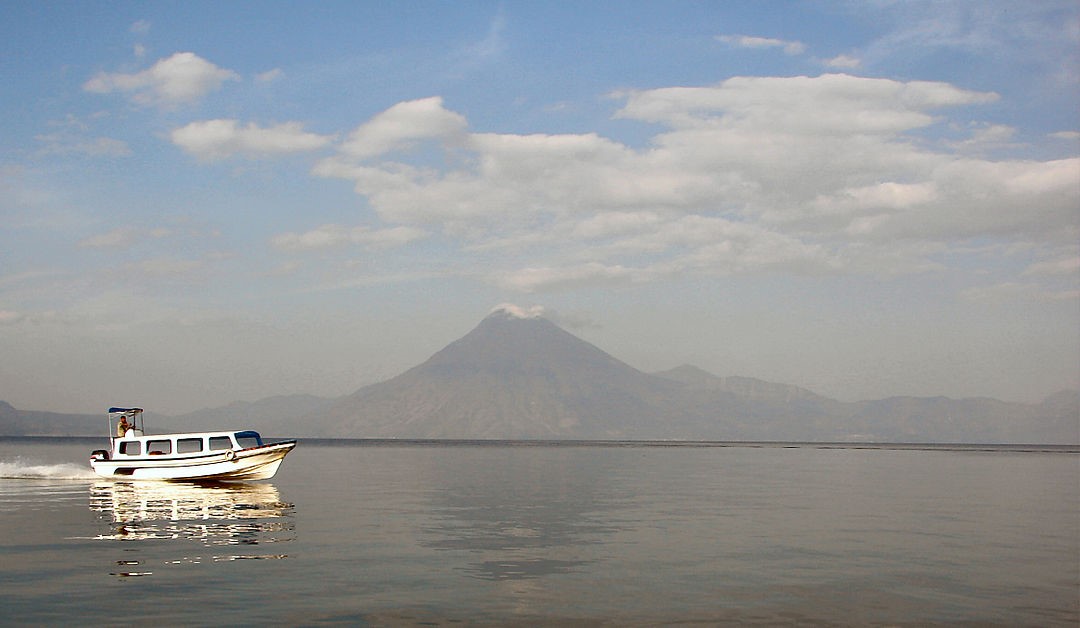The volcano is a majestic and beautiful wonder of nature, attracting with its beauty and grandeur. At the same time, it is a source of constant danger, because it is beauty that can bear death. Of course, active volcanoes at night look very impressive and fascinating, however, the reverse side of the medal - volcanic bombs, lava and pyroclastic flows, ash, stones and red-hot volcanic gases can destroy everything in its path. People were repeatedly convinced of the power and ruthlessness of volcanoes, as a result of the eruption that killed entire cities and countries.
Today we will talk about the beautiful and dangerous giants - the largest volcanoes on our planet. The ranking includes both active and conditionally dormant volcanoes, and the criterion for their selection was all the same - size.
10. Sangay
Starts our rankings active stratovolcano, which is located in Ecuador. The height of Sangaya reaches 5,230 meters, while the summit consists of 3 craters, the diameter of which is from 50 to 100 meters.This is a relatively young and very restless volcano in South America, the first eruption of which was recorded in 1628, the last in 2007. At the moment, its activity is moderate, so there are excursions here, and tourists can, if desired, climb the top of it.
9. Popocatepetl
The next volcano is Popocatepetl, whose height is 5455 meters. At the moment, the volcano, which is located on the Mexican Highlands, is considered calm, but despite this, its summit is always shrouded in a cloud of ash and gas. The danger of the volcano is that it is very close to the densely populated areas and to Mexico City just 60 kilometers. The last time the eruption occurred on March 27, 2016, as a result of which the giant threw a huge column of ash.
8. Elbrus
There are also large volcanoes in Europe, for example, Elbrus stratovolcano in the North Caucasus. At the same time, it is the highest point in Russia, because its height reaches 5642 meters (one of the highest points of the planet). As for the activity of the volcano, scientists argue, because some consider it to be damped, others convince that the volcano is already extinct. Sometimes small earthquakes occur here, as a result of which sulfur dioxide escapes from cracks. In this regard, scientists suggest that if Elbrus wakes up, it will be deadly.
7. Orizaba
The next largest volcano is Orizaba, which is the highest point in Mexico (5675 meters above sea level). The last eruption of the volcano occurred in 1687, and now this beautiful giant is considered asleep. To protect the volcano, a special reserve has been created around it, and for the summit explorers, beautiful panoramic views are opened here, thanks to which you can make unique photos.
6. Misty
Volcano, located in the south of Peru and occupying the sixth place among the largest volcanoes on the planet - Misty, whose height is 5822 meters. This volcano is active, its last eruption happened in 1985, and in 2016 there was an increase in fumarolic activity on it - a sign that it is preparing for an eruption again. By the way, not far from the volcano there is the city of Arequipa (White City), whose buildings were erected from the white sediments of the pyroclastic flows of this volcano.
5. Kilimanjaro
The next place in the ranking was occupied by the highest point in Africa - Kilimanjaro. Scientists agreed that this stratovolcano, whose height is 5895 meters, is potentially active and can pose a threat. The fact is that it continues to periodically emit gases, in addition there is the risk of a crater collapsing that could provoke a new eruption. Documentary evidence of its eruption is not, however, local residents are convinced that the last time it happened a little more than 200 years ago.
4. Cotopaxi
Cotopaxi, the second largest peak of Ecuador, is the fourth largest largest volcano in the world. The height of the volcano is 5897 meters, while it is considered active (active). The first eruption occurred in 1534, the last recorded in August 2015. During this time, he erupted more than 50 times.
3. San Pedro
Well, so we got to the top three of the giants, frightening with their deadly nature and attracting with greatness, beauty. Opens the top 3 among them stratovolcano San Pedro, which is located in Chile. The height of this giant is 6145 meters, and the last documented eruption happened in 1960.
2. Mauna Loa
The next was the volcano Mauna Loa, which is located in the Hawaiian Islands. If we consider in terms of volume, then this volcano would take a leading position, as it contains 32 cubic kilometers of magma. According to scientists, this giant is more than 700 thousand years old, while it is an active volcano. The last eruption happened in 1984 and lasted for several weeks, as a result of which the local residents suffered enormous damage.
1. Lulagliaco
The champion of our ranking has become the world's largest active stratovolcano, Lullaigliaco, which is located between Chile and Argentina.The height of this giant is an incredible 6739 meters, and the last eruption recorded in 1877. At the moment, it is in the solfarth stage - periodically releases water vapors and sulphurous gases. In 1952, the first ascent of the volcano happened, as a result of which they found the Incan sanctuary and children's mummies, sacrificed.
The Grand Prix
Not included in the rating of Yellowstone Calder, which is 72 km by 55 km. The fact is that it is considered the only supervolcano and is located in the national park of the United States. It has not manifested its activity for 640 thousand years, but beneath it lies magma, the depth of which is more than 8 kilometers. For all the time of its existence, it erupted three times, with each time an eruption was accompanied by cataclysms that change the entire planet. Scientists suggest that the next eruption may put an end to human civilization.






















